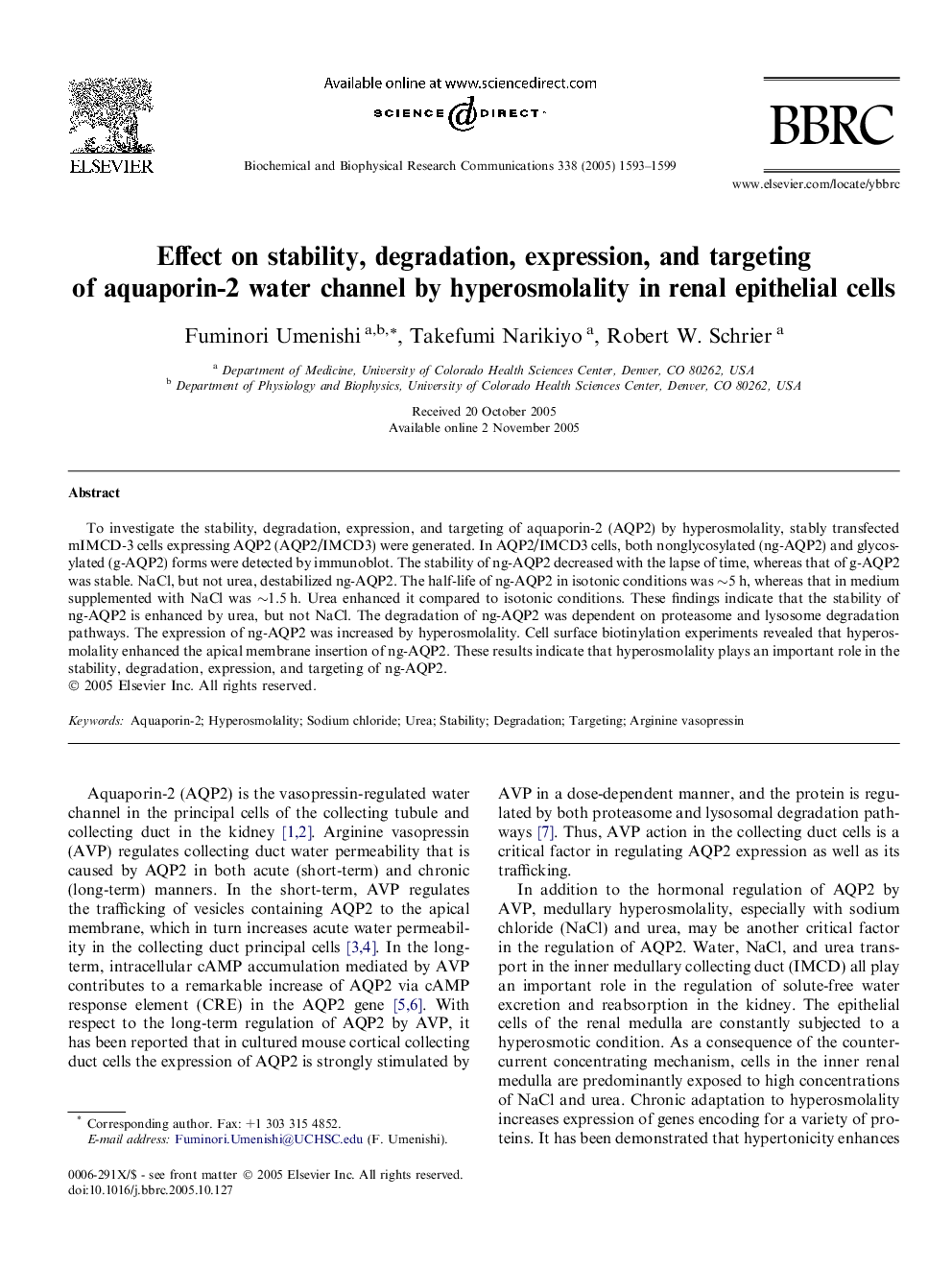| Article ID | Journal | Published Year | Pages | File Type |
|---|---|---|---|---|
| 10768897 | Biochemical and Biophysical Research Communications | 2005 | 7 Pages |
Abstract
To investigate the stability, degradation, expression, and targeting of aquaporin-2 (AQP2) by hyperosmolality, stably transfected mIMCD-3 cells expressing AQP2 (AQP2/IMCD3) were generated. In AQP2/IMCD3 cells, both nonglycosylated (ng-AQP2) and glycosylated (g-AQP2) forms were detected by immunoblot. The stability of ng-AQP2 decreased with the lapse of time, whereas that of g-AQP2 was stable. NaCl, but not urea, destabilized ng-AQP2. The half-life of ng-AQP2 in isotonic conditions was â¼5Â h, whereas that in medium supplemented with NaCl was â¼1.5Â h. Urea enhanced it compared to isotonic conditions. These findings indicate that the stability of ng-AQP2 is enhanced by urea, but not NaCl. The degradation of ng-AQP2 was dependent on proteasome and lysosome degradation pathways. The expression of ng-AQP2 was increased by hyperosmolality. Cell surface biotinylation experiments revealed that hyperosmolality enhanced the apical membrane insertion of ng-AQP2. These results indicate that hyperosmolality plays an important role in the stability, degradation, expression, and targeting of ng-AQP2.
Keywords
Related Topics
Life Sciences
Biochemistry, Genetics and Molecular Biology
Biochemistry
Authors
Fuminori Umenishi, Takefumi Narikiyo, Robert W. Schrier,
